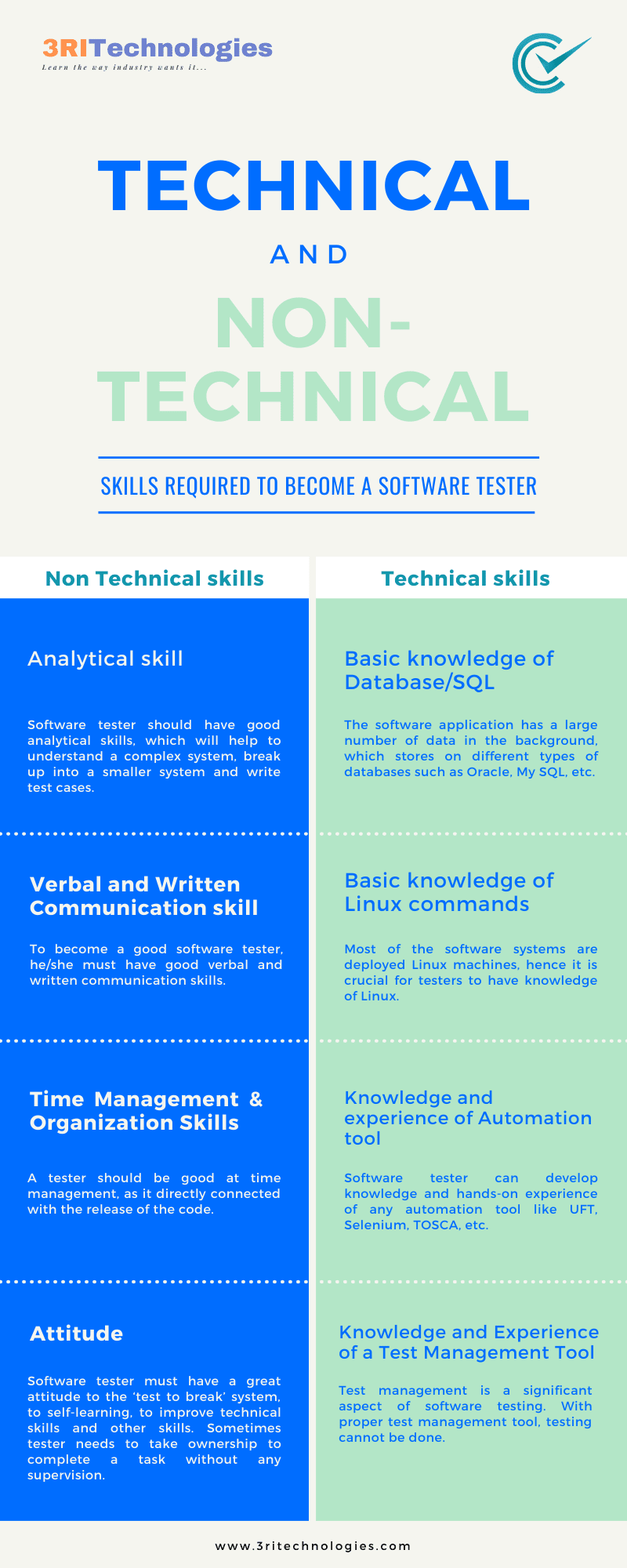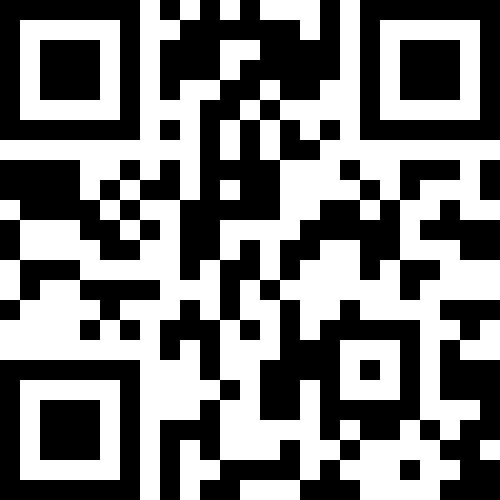The world where we live now is completely modernized. We have a driverless car, automation at home where you can operate anything and know about the home electronic product status and control them. With a camera system, you can keep a watch on everything around you. All these things are mostly software products. They run according to the software as the systems are a combo of hardware and software products. This is where the need for hardware and software tester arises. In this blog, our complete focus is on a software tester; tester is an essential job as they investigate the functioning and working of software from the early stages or later stages.
So, what is software testing? If we were to define software testing simply, it’s the process of finding and fixing errors in a software application. However, its scope is much broader, involving specific testing techniques and adhering to key characteristics of software testing to ensure the final product is reliable, functional, and secure. For anyone looking to start a career in IT, taking a software testing course is a strategic first step. Our Software Testing Classes In Pune provide the perfect foundation to master these essential skills.
To evaluate one or more characteristics and properties, software tests include the execution of a software function or System component. In general, the members or systems under test show to what extent they fulfill the criteria that guided their design and development, correctly meet any inputs, perform their functions within an acceptable period and are sufficiently accessible, can be deployed and used in their intended environments to achieve the overall result that their investors want.
Key Testing Techniques and Characteristics of Software Testing
Software testing is a method to analyze a software application’s performance to see whether the designed software meets the prescribed criteria or not or whether to locate the flaws to make sure that the system is a fault to create a higher quality product.
It can also be defined as a procedure for evaluating a software application to identify inconsistencies in actual and appropriate requirements and determine the software app’s specifications.
If you are interested in making a career in Software Testing then do check out Tosca Training
Importance of Software Testing
Human lifestyles evolve in all aspects due to continuous digitalization trends and innovations in sync with emerging advancements. We often transform the way. For instance, we have easy accessibility to our banking, buying online, making purchases online, and even more. Technology and innovation are the foundations for all of us. What about when the technologies are unreliable. We all acknowledge that even a minor problem has a significant loss of money and reputation. We need testing in the software development process to create a superior product.
The software application’s compatibility analysis is a skill to identify whether another software was developed with the criteria and detecting flaws to guarantee the software are error-free for a reliable product that is produced.
The benefits of Software Testing
A few of the factors why testing becomes an essential and necessary aspect of IT are mentioned.
- Affordable
- Contentment/ satisfaction of customers
- Security of the product/software
- Quality of the product
Enroll our Selenium Classes in Pune and become an expert in Software Testing.
Test cases in Software Testing
A test case contains a collection of details, preconditions, expected outcomes, and post-conditions for a particular test scenario to enforce consistency. Test Case serves as the starting point for test execution, and the application has a definite result after the application has applied a variety of input values.
Typical Parameters of the test case:
- The ID of the test case
- Scenario Research
- Definition of the test case
- Test steps Steps
- Preconditions
- Data Test
- Expected outcome
- Parameters for testing
- Current outcome
- Information on the environment
- Observations
Testing in Software Engineering?
Testing in software engineering is, under ANSI/IEEE 1059, a procedure for assessing a software product to evaluate if the software product satisfies the requirements needed. The testing process provides a comprehensive overview of the software product’s functionality for specifications, bugs or error, protection, trustworthiness, and performance.
Software Testing types?
In two types, a tester can do software testing that is as follows:
- Manual testing
- Automation testing
Manual testing:
Typically, all of the functionality indicated in the specification documents is validated, though perhaps the tester attempts the software from the final user’s standpoint. Manual testing plans vary from entirely organized test cases, which provide testers effective proposals and predicted outcomes to standardized test manuals. There are a couple of developed tools in the market for testing, but if you’d like to start with a primary and versatile spot, try on Testpad.
Automation Testing:
Automation Testing: Automation testing is the software testing method for finding bugs using a software application. Testers then run the test scripts and automatically produce the reports using automation software. The QTP/UFT and Selenium are some of the well-known automation evaluation tools.
Check out Online Selenium Training. Enroll now!

Software Testing Methods
There are two types of methods for testing in Software testing that are as follows:
- Dynamic Testing
- Static Testing
Dynamic Testing:
Validation of software testing is often referred to as Dynamic Testing. The complex testing process of the actual product is valid. Validation is the procedure, i.e. if the product we have created is validated accurately or not. The various stages are Evaluate the application program (Desktop application, Web application, Mobile Apps)
Static Testing:
It is also called software testing verification. Testing is a static document and file verification process. Verification is the method to ensure that we are producing the correct product, i.e., to verify the demands we have and to evaluate not whether the product was developed appropriately. Inspections, feedback, development are all activities involved here.
Usually, for software maintenance, the software tester needs to perform this testing that is as follows:
- Regression Testing
- System Testing
- Integration Testing
- Unit Testing
Software testing with the approach of “box”.
Methods of software testing are generally categorized into tests of white and black boxes. These two methods are used to characterize the views of the tester in the design of test cases. The software testing process can also be used for a hybrid technique called grey-box testing. This “arbitrary distinction” between black and white box testing has faded slightly with the concept of grey-box testing—which generates tests from essential design elements.
- White Box Testing
- Black box testing
- Grey Box Testing
It doesn’t matter whether you are a Black Box, a White Box, or a Grey Box Tester. Software testing in software engineering plays an enormous role in the progress of a project.
Quality assurance (QA), Quality Control (QC), and Testing are software quality standards.
Although making mistakes is a human thing, the cost of an error may be too high sometimes. History knows several cases of software defects causing billions of money wastage or causing even loss of life.
“Quality Assurance is a broad term for the continuous and consistent improvement and maintenance of the process facilitating QC function.” As established, QA focuses more on the organizational aspects of quality control and monitoring the coherence of the manufacturing process.
The team verifies compliance with the functional specifications of the product by quality control. QC aims to “maintain or increase product quality and minimize or eliminate errors in the manufacturing industry.” This operation is carried out before release on the finished product. It is equivalent to pulling out the assembly line of a random effect in terms of the production industry to see if it meets the technical requirements.
Testing is an essential activité for identifying, resolving, and evaluating product usability, functionality, protection, and compatibility in software source code technical problems. It has a minimal emphasis and is conducted parallel to the production or test stage by the test engineers (depending on the methodological approach to the software development cycle).
Enroll our Selenium with Python Online Training and become an expert in Software Testing.
Skills needed to become a Software Tester
A software testing process is often self-centred and varies between individuals. But a range of technological and non-technical skills is sought in companies when employing task forces. We spoke about some of the more essential yet different characteristics, but not all of them. Each tester has its own specific experience that allows them to recognize important issues easily. This is a feature that is built from expertise and practice over time. The technical and non-technical skills a tester should have are as follows:
- Mindset
- Report and interact
- Comprehensive business scenario understanding and mapping
- The global approach to process automation
- The modern approach (DevOps and Agile)
- Understanding the life cycle of code systems (SDLC)
- Management of project
- Clearness Rational
- Latest web and mobile technology trends awareness
- Planning for and documents
- Test skills for Cross-Browser
- Constant learning process synergies and trust-building testing tools and technologies front-end communication
- What academic qualification is needed for Software Testing?
- Computer science should be the academic background for a software tester.
It will easy to find a job with just a BTech, B.E., MCA, BCA, BSC- Computer. You must complete software testing certifications such as ISTQB and CSTE to learn the Software Development/ Test Life Cycle and other testing methodologies when you do not have any of ISTQB and CSTE diplomas.

How does Software Tester work?
A technical or software, or app developer develops a program. A software testing device plays a crucial role. Usually, the tester functions as part of the quality assurance or quality management department of engineering. He/she receives software builds and tests at different stages of completion, recording the software response. Documentation is essential as documentation is also essential in helping programmers and software engineers find code issues. One of the main elements of testing is documentation. Another important feature of the testing is the identification of frequent crashes and bugs in the software product.
Wishing to master the skills and get trained by Industry Experts? Visit 3RI Technologies
How can you develop your career as a Software Tester?
Software tester growth starts from the typical CMMI levels; you begin from freshers from job profile as a QA Analyst. After gaining experiences, you can reach up to a job profile as a Senior Test Manager.
Your Software Testing career development in a typical CMMI level 5 organization as Software Tester (QA Analyst) looks like the following.
- Analyst for QA (for fresher)
- Sr. QA Analyst (2 to 3 years experience is needed)
- Coordinator of the QA team (5-6 years experience is needed)
- Test Manager (8-11 years experience is needed)
- Senior Test Manager (14 years experience is needed)
Where to start if you want to become a Software Tester?
You begin with basic software testing principles. You have requested freelance work already. This helps you acquire practical knowledge and strengthens the test concepts you learned.
Next, you go to Selenium – tool for automation, then to JMeter – tool for performance testing, and then TestLink – tool for test management. We recommend that you apply for freelancing jobs all the time you study (besides other advantages, there will be some moolah as well!).
Enroll our Selenium with Python Course and become an expert in Software Testing.
What is the future of Software testing?
It’s always fun to test. As long as developers are designing projects, you will test them, and you will also test the improvements and maintenance etc., even after they stop developing them. It is still necessary to test. Without complete testing, the customer will never approve of the product. Test scope is always nice because it confides in everyone’s job, which we all do.
It’s always nice to add more processes when trying, so you don’t think it’s a boring and quick task to test. The testing process is extremely imperative.
Scope of Software testing is as follows:
1. High business demand.
2. Expertise niche.
3. Get into the profession of software testing.
4. High salary growth
Best Practices for Software Testing
Software testing is more than just running lots of tests. It also requires a specific approach and a streamlined procedure to conduct these tests methodically. Using software best practices can help any application or product operate better and perform better overall.
A few best practices to take into account to guarantee the success of software testing projects are as follows:
- Include security through focused testing: Security threats are ever-changing. Software products should undergo security-focused testing and regular software testing to protect them against cyber threats. Penetration testing and ethical hacking are valuable tools that organizations can use to assess the security posture of software and identify vulnerabilities.
- Engage users: Developers should maintain open lines of communication with users since they are the best experts on a software product. You can test a product from the user’s viewpoint by asking open-ended questions about what problems . customers encounter using it and what features they want to see. Making test accounts that replicate the user experience in production systems is another great way to include user feedback for successful software testing.
- Remember the future: As technology advances rapidly, every new product should be scalable and ready to adjust to shifting consumer needs. Developers should consider future-oriented and adaptable features before beginning work on a product. The software’s coding style and the architecture type both contribute to this. Beyond testing for flaws and vulnerabilities, scalability concerns should be considered when testing a futuristic product.
- Programmers should refrain from writing tests – Because they usually come first in coding. Writing those tests is not recommended for programmers as they may be prejudiced towards their code or overlook other inventive elements in the test sets.
- Complete bug reporting: To make it easier for the persons in charge of repairing the problems to understand the information, bug reports should be as specific as possible. A good report should be impartial, consider the seriousness of the issues, rank the fixes in order of importance, and include recommendations for preventing the flaws from resurfacing.
- Tests should be divided into smaller portions : This will save time and money, particularly when testing is done frequently. Teams can perform a more effective analysis of each test by segmenting lengthy tests into several sub-tests, such as security, UX, function, and user interface testing.
- Employ two-tier test automation – Two-way software testing is the best technique for firms to cover all the bases. It’s a wonderful idea to perform quick sanity tests on each source code commit and then do full regression testing after work. In this manner, rather than having to go back and rectify mistakes later on, developers can receive quick feedback on the current section of the code and address it right away.
- Do not skip regression testing : An application must undergo regression testing, among other essential procedures, before moving on to the production phase.Thus, it shouldn’t be skipped. The fact that regression testing comes after most of the testing supports the validation of the entire application.
Software Testing Resources
Just like any other process, there are various stages to software testing.The phrase “software testing life cycle” describes this progression of steps. Let us take a short look at them.
- Planning
The initial stage in every technique is planning. You gather all the necessary information on the product during this period. You compile a list of jobs that require testing initially. You should know what the bug was and the optimal behavior if you are testing following a bug repair.
Next, you need to order the items on your to-do list. Work division is also possible in this phase if the entire team is active.
● Preparation
You must lay the groundwork for testing as soon as you know your responsibilities. This comprises setting up the testing environment, gathering test cases, and investigating the features and test cases of the product. This is also the place to gather testing and familiarization approaches and tools.
- Execution
Now is the moment to test-drive the product You run the test scenarios and get the data. Next, ascertain whether the product functions as anticipated by contrasting the actual outcomes with the predicted result. You record all of the test cases and tests that pass and fail.
- Reporting
In this final stage of software testing, you must record your results and provide them to the relevant staff members. In this situation, test-case failures are most interesting. Test results and procedures should be appropriately and reasonably explained.
It’s important to include pictures, helpful information, and instructions on replicating the issue for complicated testing.
- Two Methods of Testing
As far as we know, everything that requires human labor is gradually automated in the era of machines. The testing domain is also facing an identical problem. Automated and human software testing are the two methods available.
In any sector, manual labor requires a great deal of time and energy. Examining several aspects of an application is the process of manual testing. In this case, the tester completes the procedure without test scripts or tools.Testers carry out many test cases without the aid of automated technology. At the conclusion, they generate a test report.
Analysts for quality assurance check for software errors that are still in development.They draft scenarios and personally test each one using a QA tool or Excel file.
However, testers use scripts in automated testing, which automates the procedure. The automated pre-scripted tests compare the results of the natural and predicted experiments. Regression testing and completing repetitive activities become less laborious with test automation when ongoing human participation is not required.
When Choosing a Software Testing Method, What Should You Look For? Step Into The Pyramid Of Test Automation
Software testing is a broad category, as you have seen. You cannot utilize one type of feedback system instead of another because it offers distinct feedback. Furthermore, every kind of testing has related difficulties and expenses of its own.
How do you select from among the many testing options to maximize test coverage, guaranteeing you can ship high-quality software while making the most efficient use of the resources available to your team and organization, given their limited resources?
This is where the “test automation pyramid” idea is useful.
The testing pyramid, also known as the test automation pyramid, is a notion that can assist you in considering and selecting among the various software testing methods.
The foundation of the pyramid is unit tests. Unit tests are more straightforward and less expensive to design than most other testing formats. Their lack of external dependencies allows them to operate quickly and deliver incredibly accurate feedback. So, having a large number of them makes it logical Integration tests, often called service tests, are the middle of the pyramid. Compared to unit tests, they provide more “realistic” feedback because they validate the integration of units and interact with actual dependencies. However, as a result, they also require more effort to write and maintain, operate more slowly, and provide less accurate feedback.
Although integration tests are helpful, it makes sense to use less of them because of their drawbacks.
Lastly, end-to-end tests are located at the summit of the pyramid. Because they test the program the same way a genuine user would, end-to-end tests are the most realistic software testing. In addition to being more costly to write, maintain, and implement, they also tend to be slower and more brittle.
These kinds of tests are beneficial to have in your test suite, although it’s best to have a small number of them.
What is Possible to Automate in Software Testing?
Larger software volumes can be tested using automated testing when manual testing becomes tedious and time-consuming. Software applications can test scripts automatically, freeing time and resources and allowing businesses to test more effectively for less money.
To deploy automated tests continuously and without time limits, many QA teams create their own in-house technologies for testing. The majority of suppliers also provide capabilities for work automation and simplification. Web application framework automated testing is frequently conducted using tools like Java for Selenium.
The software testing process can benefit from automation in the following five ways:
- Continuous testing is an automated testing method that developers use on every software product they deploy. It provides early process code validation and error detection. Automating tests is an integral part of software development from the very beginning through to deployment, allowing for a continuous and rapid process.
- Virtualization of services: Teams may find it challenging to test effectively and early in the process if specific test environments are unavailable during the early phases of software development. Service virtualization can bridge this gap by simulating as-yet-undeveloped services and systems. Instead of waiting to design the complete product, this pushes firms to start creating test strategies earlier. Reusing, delivering, or altering the testing scenarios without affecting the initial production system is an additional benefit of virtualization.
- Bug and defect tracking: Automated testing is an excellent way to find bugs that human testing may overlook, such as memory leaks. With hundreds of runs in a brief time, the automated tests can identify these problems more quickly. Regression testing is automation testing that ensures that previous defects don’t resurface with every build. The quick reporting of failed tests to developers—instead of waiting for human testing results—is another benefit of automated software testing. This is particularly crucial for products that receive frequent upgrades.
- Reporting and metrics: When it comes to the automation framework, both reporting and metrics are essential. Automated testing uses sophisticated tools and analytics to integrate metrics for sharing test results and status reports with the public. Unlike manual testing, when a single developer looks at the data, this allows entire teams to assess the state of a project and coordinate across departments.
- Configuration management: Code, design papers, requirements, test cases, and other test assets are all obvious when using automated software testing. This provides centralized administration so that team members can monitor and work together on various development stages.
What is the salary of a Software Tester?
Salary is the main goal behind learning any course. High package salary job is always preferred. In Software testing, you can achieve a high salary package job.
The starting wage for the Software Tester is Rs. 4.2 lakh/year or Rs. 218/hour in India. Career paths begin at a level of Rs. 2.4 lakh annually, while most seasoned employees reach Rs. 960,000 annually.
If you want to know more about the Software testing course and wish to become an expert Software Tester, come and join the 3RI Technologies Software testing course in Pune or visit the 3RI Technologies website.




